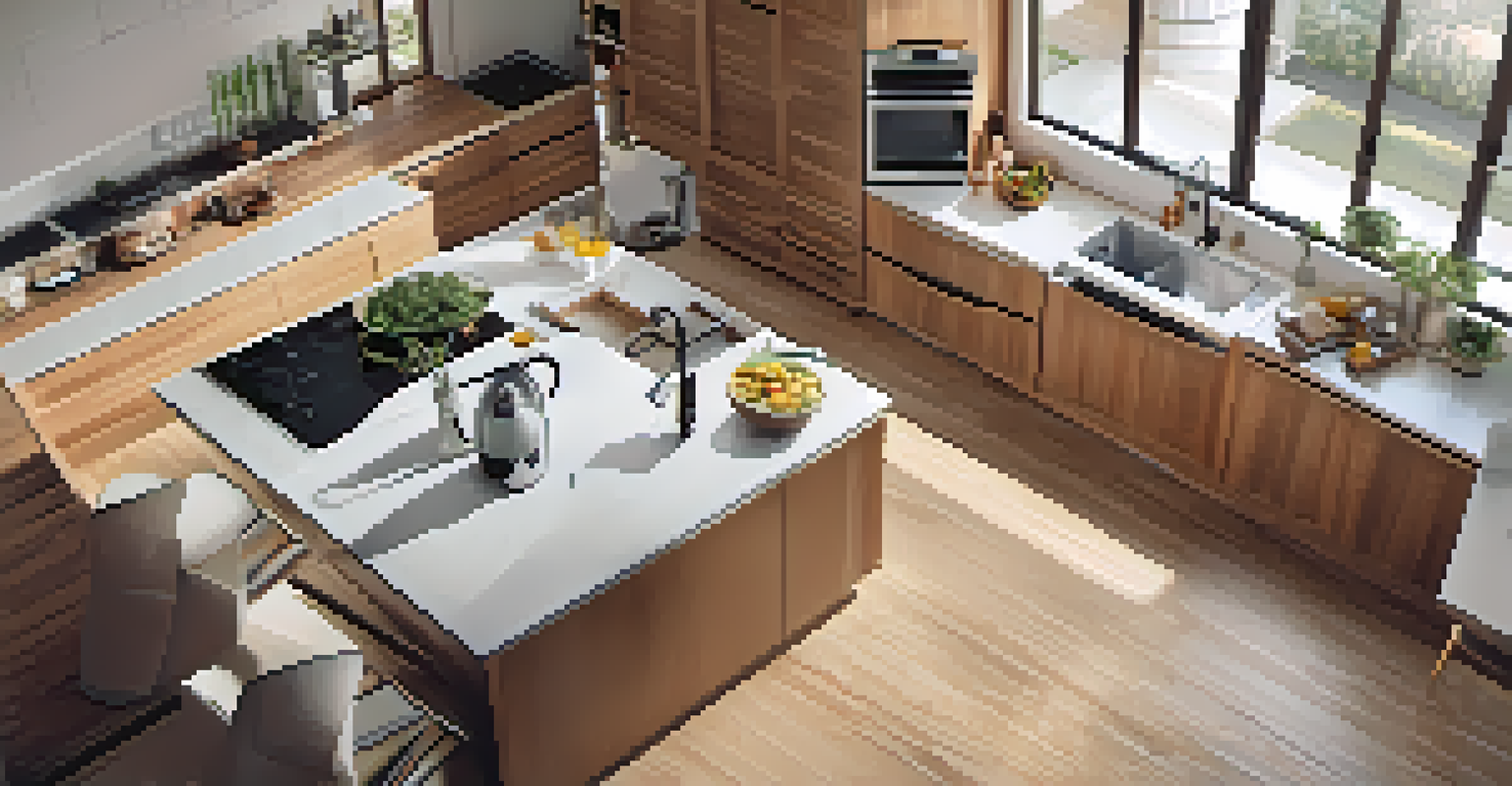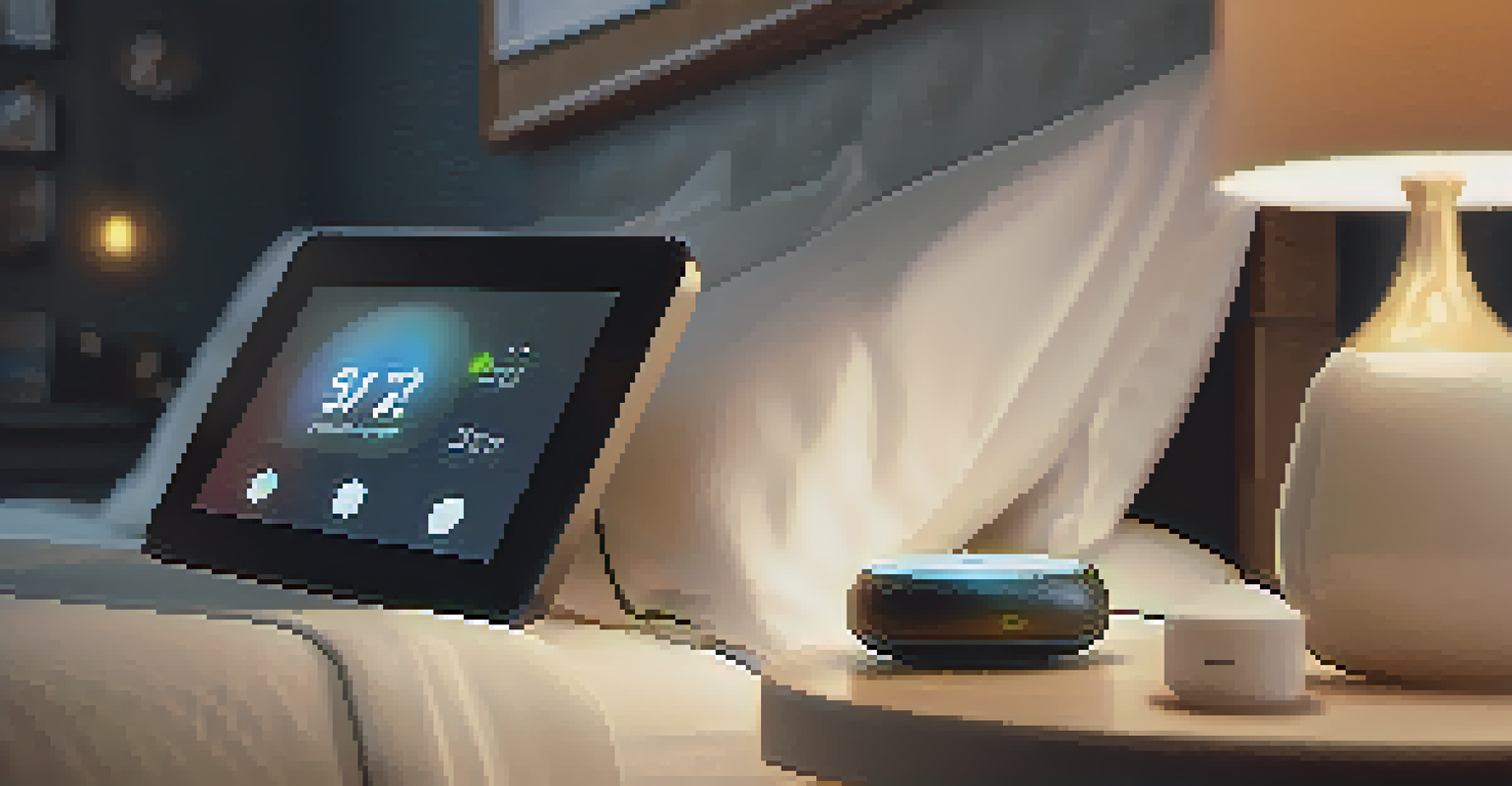Reducing Standby Power: Automation Techniques to Save

Understanding Standby Power and Its Impact
Standby power, often referred to as phantom load, is the energy consumed by devices when they are turned off but still plugged in. This sneaky energy drain can account for a significant portion of your electricity bill, sometimes up to 10%. Understanding the implications of standby power is crucial for anyone looking to reduce their energy consumption.
The greatest threat to our planet is the belief that someone else will save it.
Many household gadgets, like televisions, chargers, and kitchen appliances, continue to draw power even in their 'off' state. This can be frustrating, especially since you might believe you’re saving energy by turning them off. However, the reality is that they are still quietly pulling energy, contributing to unnecessary costs and environmental impact.
By recognizing the sources of standby power in your home, you can better strategize how to combat this issue. It’s not just about saving money; reducing standby power also lessens your carbon footprint, making your home more energy-efficient and eco-friendly.
The Role of Smart Plugs in Energy Management
Smart plugs are a simple yet effective way to manage standby power. By allowing you to control your devices remotely via a smartphone app or voice command, these plugs can automate turning off devices that aren’t in use. This means you can ensure that your appliances aren’t drawing power when you’re not around.

Imagine coming home after a long day and realizing you forgot to turn off your gaming console or coffee maker. With smart plugs, you can easily check the status of your devices and cut off power with just a tap on your phone. This convenience not only saves energy but also helps in reducing wear and tear on your devices.
Standby Power Wastes Energy
Devices consume energy even when turned off, contributing significantly to your electricity bill and environmental impact.
Furthermore, many smart plugs come with scheduling features, allowing you to set specific times for devices to turn on or off. This adds another layer of efficiency, making it easy to minimize standby power during hours when you’re not using those appliances.
Using Smart Home Hubs for Automated Control
Smart home hubs act as a central control point for all your devices, enabling seamless automation. By integrating various devices, such as lights, thermostats, and appliances, you can create routines that automatically turn off power when certain conditions are met. For instance, you can set your devices to power down when you leave the house or go to bed.
Energy conservation is the foundation of energy independence.
This level of control means you won’t have to manually turn off each device individually, saving both time and energy. Think of it as having your very own energy assistant, always ready to help you maintain an efficient home.
Additionally, many smart home hubs provide insights into your energy usage, helping you identify which devices consume the most standby power. By pinpointing these energy hogs, you can make informed decisions about which devices to replace or eliminate.
Timers and Schedules: Simple Automation Techniques
Timers offer a straightforward way to automate your appliances without needing smart technology. By plugging devices into a timer, you can set them to turn off after a certain period, ensuring they don’t remain on unnecessarily. This is particularly useful for items that you know you won’t need at certain hours, such as holiday lights or outdoor decorations.
For instance, if you have a lamp that you only use in the evenings, programming it to turn off automatically at midnight can help reduce standby power. This simple adjustment ensures that devices aren’t drawing power overnight when they’re not in use.
Smart Plugs Save Energy Effortlessly
Using smart plugs allows you to control and automate devices, ensuring they don’t draw power when not in use.
Using timers not only helps in managing energy consumption but also extends the lifespan of your appliances. By cutting off power during downtime, you reduce the overall wear on the devices, allowing them to function more efficiently for longer.
Energy Monitoring Devices: Track Your Usage
Energy monitoring devices can provide a real-time look at your home’s energy consumption. These gadgets plug into your outlets and track how much power each device uses, including its standby power consumption. By understanding which devices are the biggest offenders, you can make targeted changes to your habits.
For example, if your energy monitor reveals that your entertainment system draws more power than expected, you might decide to invest in a smart power strip that can automatically cut power when devices are not in use. This awareness not only empowers you to take action but also promotes more energy-conscious habits.
Furthermore, many monitoring devices can send alerts or reminders when energy use spikes, encouraging you to check on devices that may be left on. This proactive approach helps in making energy efficiency a priority in your daily routine.
Creating an Energy-Efficient Smart Home Ecosystem
To truly reduce standby power, consider creating a cohesive smart home ecosystem. By selecting compatible devices that can communicate with each other, you can create an automated environment that makes energy efficiency a priority. For example, linking your smart thermostat with your smart plugs can ensure devices are turned off when you’re not home, based on your heating and cooling schedule.
This interconnected approach not only simplifies your life but also maximizes energy savings. Imagine a scenario where your home knows when you're away and systematically powers down all non-essential devices, ensuring minimal energy waste.
Create a Smart Home Ecosystem
Integrating compatible smart devices can automate energy savings and help reduce standby power across your home.
Moreover, many smart home systems offer user-friendly interfaces that allow you to adjust settings and monitor usage from anywhere. This accessibility means you can manage your home’s energy consumption even when you're on the go.
The Long-Term Benefits of Reducing Standby Power
While the immediate goal of reducing standby power is to save money, the long-term benefits extend far beyond your wallet. By taking steps to cut down on phantom loads, you contribute to a more sustainable future. Every watt saved is a step towards reducing greenhouse gas emissions and conserving resources.
Additionally, adopting energy-efficient practices can inspire those around you to do the same. When friends and family see the positive changes in your energy bill or hear about your automated solutions, they may be motivated to implement similar strategies in their homes.

Finally, creating an energy-efficient environment can lead to the development of new habits that prioritize sustainability. The more you integrate these practices into your daily life, the more natural they will become, leading to a lasting positive impact on your lifestyle and the planet.